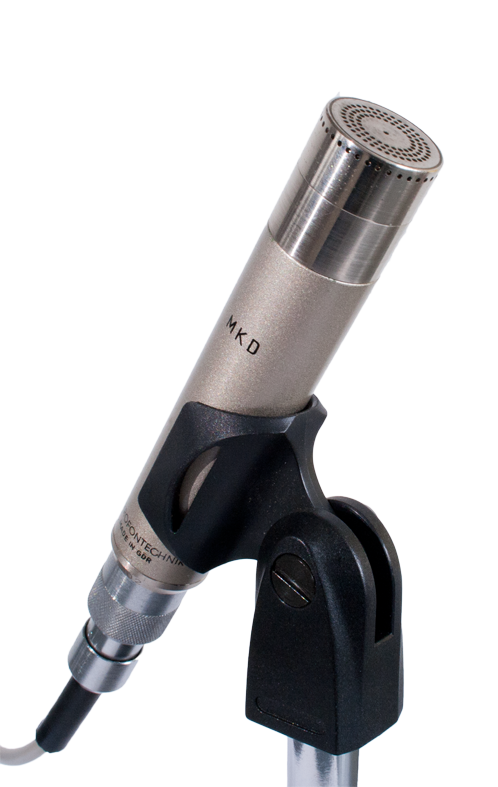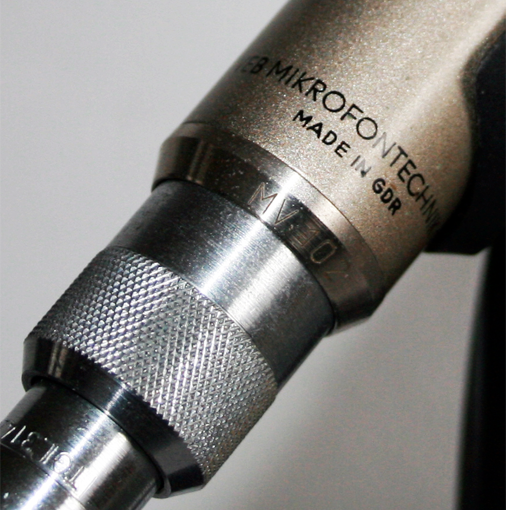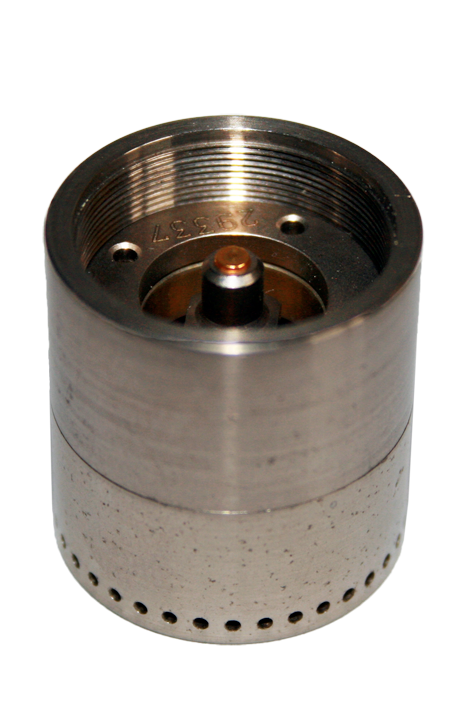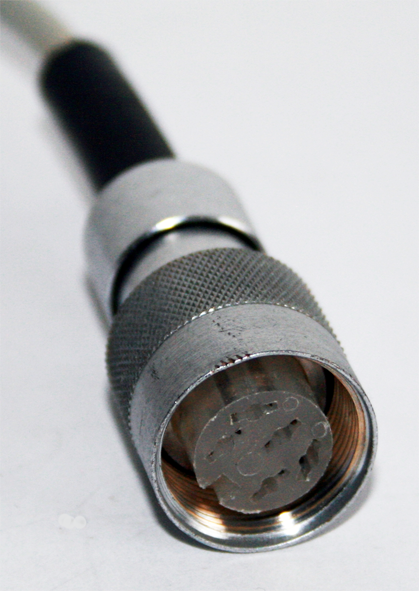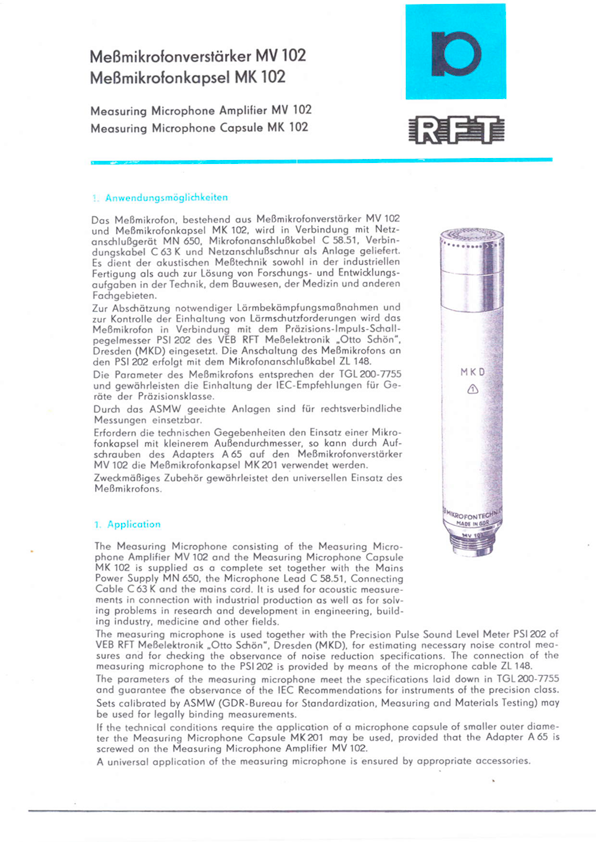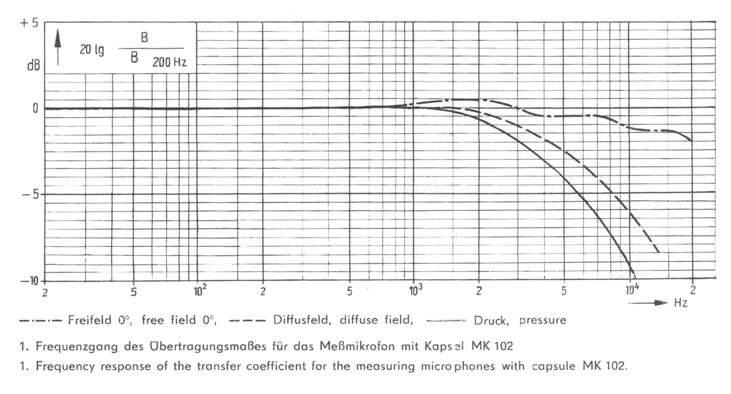|
This month a microtone type that I have never wrote about before: the measuring microphone. This type of microphone was made for taking measurements, for research and product development, which is why they had to be able to convert the sound waves into an electric signal as precisely as possible.
The first series produced condenser microphone capsule, the Western Electric 394, was also the first measurement microphone. Only well after the Second World War that role was taken over by the Danish Bruel & Kjaer, with their first model measuring microphone, launched in 1958.
Behind the iron curtain, in the 1950s, Neumann & Co, in Gefell, also worked on the development of measuring microphones, which in 1962 led to the MV630 tube pre amplifier with metric thread and the matching MK630 omni directional 1 inch condenser capsule.
Remarkably, it was developed in collaboration with the Heinrich Hertz Institute, from West Berlin. Undoubtedly, Georg Neumann himself played an important role in this, he had started with micro phone measurements in the 1930s. In 1947 he had relocated to West Germany, but he kept close contact with his company in the east.
In 1956 (East) Neumann & Co was nationalized and in 1972, the name disappeared to become VEB (Volks Eigener Betrieb) Microfontechnik Gefell.
The MV630 microphone was renamed RFT MV101 and then produced in large numbers for VEB Funkwerk Leipzig, later VEB Robotron-Meß electronik "Otto Schön"(MKD), for use with their sound level measuring equipment.
The frequency range of the MV101/MK101 ran from 10 to 20,000 Hz. For measurements for which the diameter of the capsule was too large, there was a 1/2 inch model: the MK201.
There were also various attachments, such as a nose cone and a probe adapter for the 1/2 version. With the A63 adapter the MK101 can be screwed onto standard 1/2 inch threaded amplifiers and sound level meters.
The microphones were made of nickel, including the capsule, which was manufactured via a special galvanic process. The complete microphone was made extra sustainable for long-term stability by heat treatment.
Around 1975 the successor was presented, a transistor version of the measurement microphone, the MV102/MK102. The MV102 pre amplifier was equipped with a Russian FET KM303B transistor and, just like its predecessor, delivered an unbalanced signal via a unique Small-Tuchel connector.
Because the sound quality of these microphones is extremely good, they are also used for making sound recordings, especially of classical music. Unlike standard condenser microphones, the frequency curve has not been adjusted to accentuate high frequencies, they sound more neutral, lending themself well to piano recordings.
Sometimes the MV101/102 pre amps are also combined with a large membrane capsule for use as studio microphones to record acoustic instruments.
The measuring microphones of Bruel & Kjaer were the basis for their successful omni microphones, which were great for music recordings, the current DPA models are based on these.
The nickel capsules from Microtech Gefell are also used in omni condenser microphones (C617 Set) of the US Josephson company, which pursues the highest quality.
Microtech Gefell stil produces great measuring microphones, with capsules of 1/4, 1/2 and 1 inch diameter, for measurements up to 100Khz. The modern 1" is the MK 102.1.
The MV101 and 102 are still regularly offered 2nd hand and are therefore extremely interesting for contemporary recordings.
My copy came without a power supply and was brought back to life by microphone magician Bert Drost, of Gonzo Audio.
These and many more types feature in my book Witnesses of Words. More information about that can be found at www.witnessesofwords.com
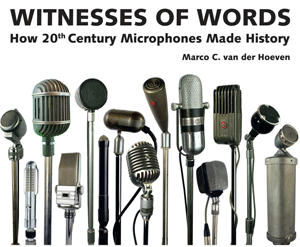
|
|
|
|
|
|
Above: the MV102 with MK102, detail and MK102
Below: connector, technical info and EQ response |
|
|
|
|
|


 Video's
Video's Contact
Contact


